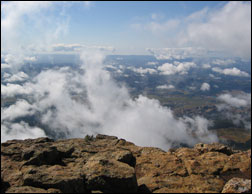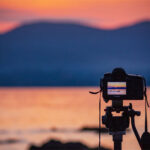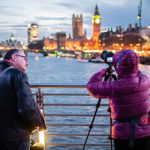
1. Appropriate film. I use 100, 200, and 400 speed maximum. Film brand is a matter of personal taste. I use the 100 and 200 when I know that it’s going to be bright out and I use 400 if I think that I’m going to capture wildlife or if I’m deep in the forest.
2. Natural light. I try to avoid using flash. If I do use flash I only use my fill flash. Whenever you use flash you rob the scene of most of it’s natural charm. Think of it how many times did you take a shot because the light was just to pretty.
3. The right lens. A slight wide angle lens in very valuable for landscapes and a slightly telephoto comes in handy for tight shots of beautiful flowers. I personally have a favorite lens 30mm-70mm that is a staple for me and I use it ninety percent of the time. Now that the technical stuff is out of the way.

5. Occasionally turn the camera vertically. So many people don’t seem to realize that they can turn their camera on to the vertical. Imagine that you trying to get this tall evergreen perched on a rock above a vista. If the camera is horizontal you’ll crop out the tree, if you turn the camera vertical you’ll get the tree and a lot of the vista too. Try this when you taking photos. Take one shot horizontal and then turn the camera vertical. You’ll be surprised.
6. If you’re taking a photo of a large horizon it will probably look flat on film. You need a sense of scale. So frame your image. Sometimes this can be a family member on one side of the shot, perhaps looking out into the beautiful horizon. A tree, rock, or plant can work in landscape shots just make sure that the framing item is not the focus of your shot. This will get you started. Nature and landscape photography is a specialized area of the art but with practice you can improve your snap shots to capture some of the great places you’ve seen.
If you have some specific questions please visit my Photography and Design Forum at: http://kellypaalphotography.com/v-web/bulletin/bb/index.php and post your question there.
About the Author
Copyright 2005 Kelly Paal Photography Kelly Paal is a Freelance Nature and Landscape Photographer, exhibiting nationally and internationally. She owns her own business Kelly Paal Photography (www.kellypaalphotography.com). She has an educational background in photography, business, and commercial art. She enjoys applying graphic design and photography principles to her web design.
Like This Article?
Don't Miss The Next One!
Join over 100,000 photographers of all experience levels who receive our free photography tips and articles to stay current:






Leave a Reply